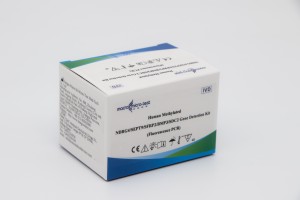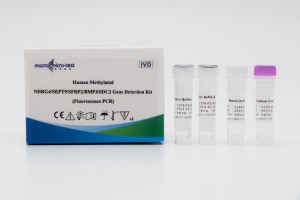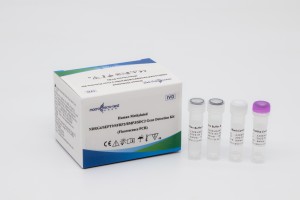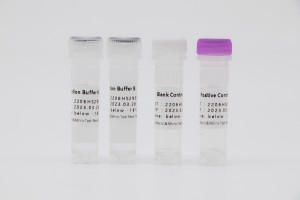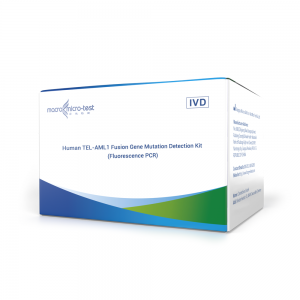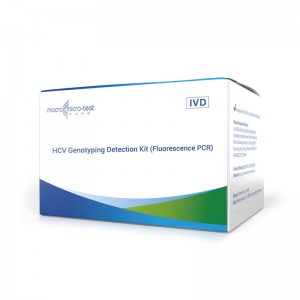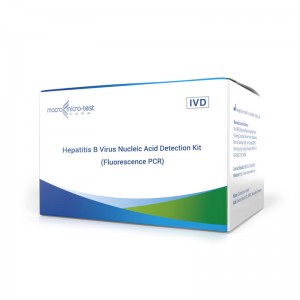Human Methylated NDRG4/SEPT9/SFRP2/BMP3/SDC2 Gene
Product name
HWTS-OT077-Human Methylated NDRG4/SEPT9/SFRP2/BMP3/SDC2 Gene Detection Kit (Fluorescence PCR)
Certificate
CE
Epidemiology
In adults, more than 10 8 intestinal epithelial cells fall off the intestinal wall every day, and are excreted with the feces through large bowel peristalsis. Due to the tumor cells are more likely to fall off the intestinal tract of the abnormal proliferation, the stool of intestinal tumor patients contains many diseased cells and abnormal cell components, which is the material basis for stable stool detection. Studies have found that methylation modification of gene promoters is an early event in tumorigenesis, and genetic material obtained from stool samples of colorectal cancer patients can reflect the presence of cancer in the intestine earlier.
NDRG4, also known as SMAP-8 and BDM1, is one of the four members of the NDRG gene family (NDRG1-4), which has been shown to be associated with cell proliferation, differentiation, development and stress. It is verified that NDRG4 methylation is a potential biomarker for non-invasive detection of colorectal cancer in stool samples.
SEPT9 is a member of the Septin gene family, which consists of at least 13 genes that encode a conserved GTPase domain that can bind cytoskeleton-related proteins, and is associated with cell division and tumorigenesis. Studies have found that the methylated Septin9 gene content is characteristically increased in stool samples from patients with colorectal cancer.
Secreted frizzled-related proteins (sFRPs) are soluble proteins that are a class of Wnt pathway antagonists due to their high structural homology to the frizzled (Fz) receptor for Wnt signaling. Inactivation of the SFRP gene results in uncontrolled activation of Wnt signaling associated with colorectal cancer. Currently, SFRP2 methylation in stool can be used as a non-invasive biomarker for the diagnosis of colorectal cancer.
BMP3 is a member of the TGF-B superfamily and thus plays an important role in embryonic development by inducing and shaping early bone formation. BMP3 is hypermethylated in colorectal cancer and can be used as an important tumor marker.
SDC2 is a cell surface heparan sulfate proteoglycan involved in the regulation of many physiological and pathological processes. Physical processed include cell proliferation, differentiation, adhesion, cytoskeletal organization, migration, wound healing, cell-matrix communication, angiogenesis; Pathological processes include inflammation and cancer. The methylation level of SDC2 gene in colorectal cancer tissues was significantly higher than that in normal tissues.
Channel
|
Reaction buffer A |
VIC/HEX | methylated NDRG4 gene |
| ROX | methylated SEPT9 gene | |
| CY5 | internal control | |
|
Reaction buffer B |
VIC/HEX | methylated SFRP2 gene |
| ROX | methylated BMP3 gene | |
| FAM | methylated SDC2 gene | |
| CY5 | internal control |
Interpretation
|
Gene |
Signal Channel |
Ct Value |
Interpretation |
|
NDRG4 |
VIC (HEX) |
Ct value≤38 |
NDRG4 positive |
|
Ct value>38 or unde |
NDRG4 negative |
||
|
SEPT9 |
ROX |
Ct value≤38 |
SEPT9 positive |
|
Ct value>38 or unde |
SEPT9 negative |
||
|
SFRP2 |
VIC (HEX) |
Ct value≤38 |
SFRP2 positive |
|
Ct value>38 or unde |
SFRP2 negative |
Technical Parameters
| Storage | Liquid: ≤-18℃ |
| Shelf-life | 9 months |
| Specimen Type | Stool Sample |
| CV | ≤5.0% |
| Specificity | There is no cross-reactivity with liver cancer, bile duct cancer, thyroid cancer and lung cancer |
| Applicable Instruments | QuantStudio ®5 Real-Time PCR Systems
SLAN-96P Real-Time PCR Systems LightCycler®480 Real-Time PCR system LineGene 9600 Plus Real-Time PCR Detection System MA-6000 Real-Time Quantitative Thermal Cycler |
Work Flow
Recommended extraction reagent: Macro & Micro-Test Viral DNA/RNA Kit(HWTS-3001, HWTS-3004-32, HWTS-3004-48, HWTS-3004-96) and Macro & Micro-Test Automatic Nucleic Acid Extractor(HWTS-3006).




